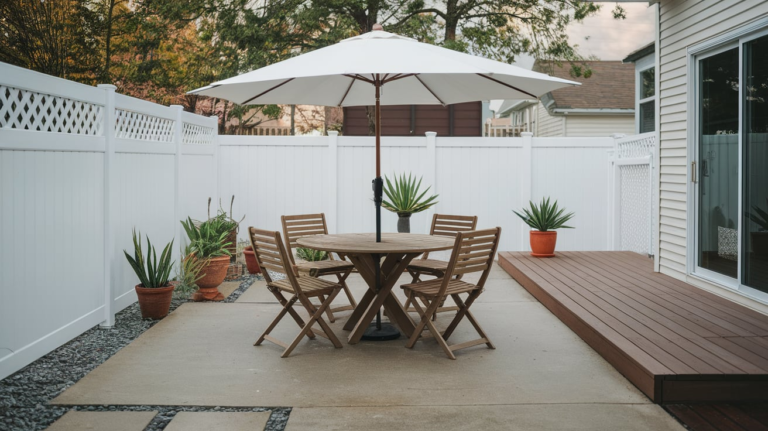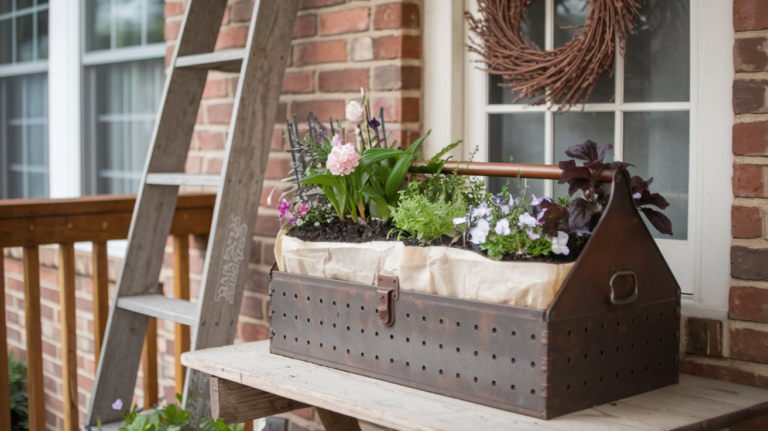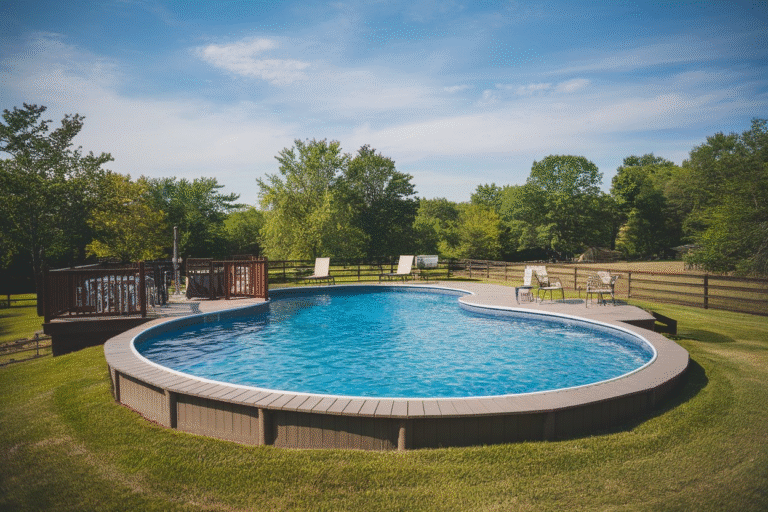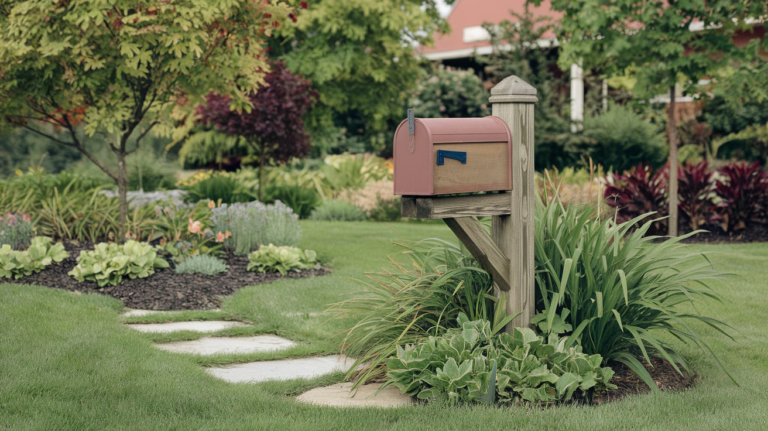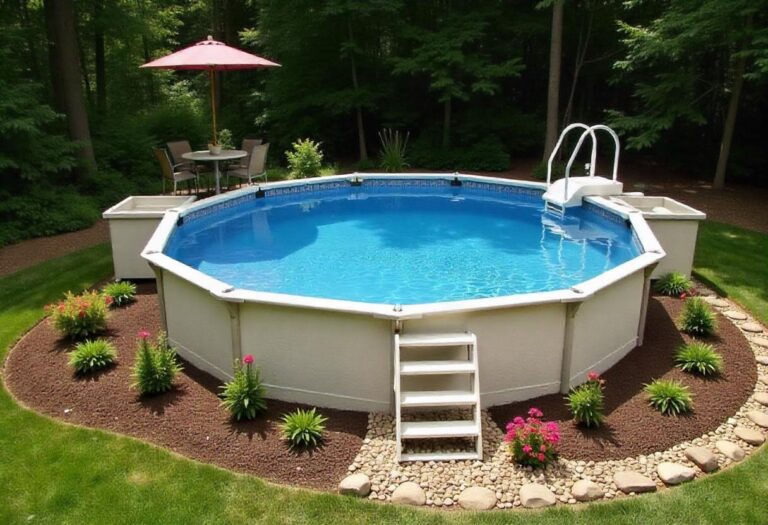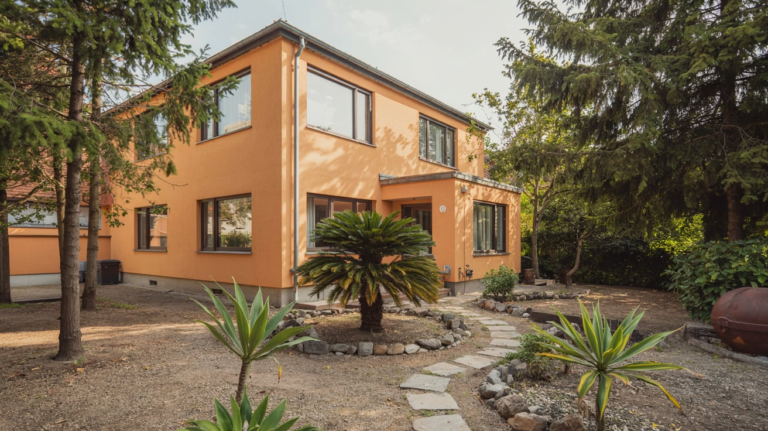20 Sloped Backyard Landscaping Ideas
Having a sloped backyard can feel like a challenge, but it’s really more of an opportunity in disguise. The unique terrain offers you a chance to create a backyard that’s not only functional but stunning.
It’s like turning a blank canvas into a masterpiece, where every inch of space has the potential to shine.
Whether you’ve got a mild incline or a steep drop, these 20 landscaping ideas will help you maximize your backyard’s potential, turning the slope into one of your space’s best features.
1. Terraced Gardens for a Multi-Level Effect

Terracing is like building an architectural staircase for your garden. If you’ve got a gentle slope, turning it into a series of terraced levels can make your backyard feel more spacious while creating beautiful, organized sections.
Each level can hold different plants, flowers, or even small trees. For instance, plant perennials or roses on the uppermost level and shrubs or ground covers on the lower ones. The trick is to use stone or timber retaining walls to keep the soil in place. Not only does this create an elegant, tiered look, but it also prevents soil erosion, making it practical as well.
2. Use Retaining Walls to Define Spaces
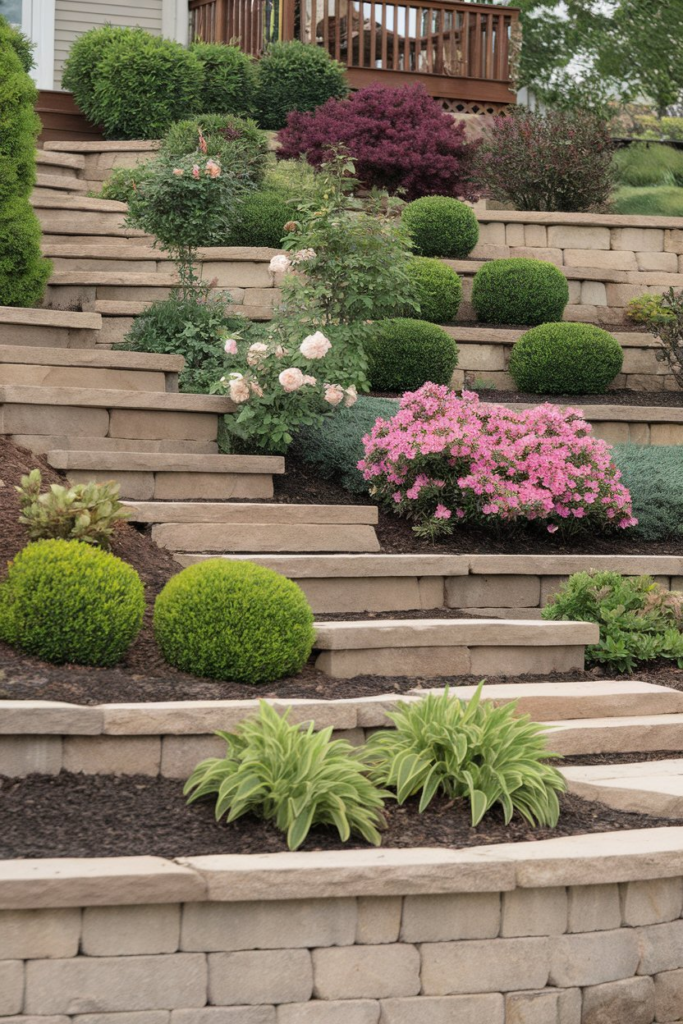
When you’re dealing with a sloped backyard, retaining walls act like invisible boundaries, dividing your space into useful, manageable sections. These walls not only help with controlling the landscape but also add texture and interest to your backyard.
You could go for stone, brick, or even concrete blocks—each material gives a different feel. Personally, I once used large, rustic stones to create a retaining wall, and the natural look blended perfectly with my garden, adding both stability and charm.
3. Create a Sloped Lawn for Relaxing Views
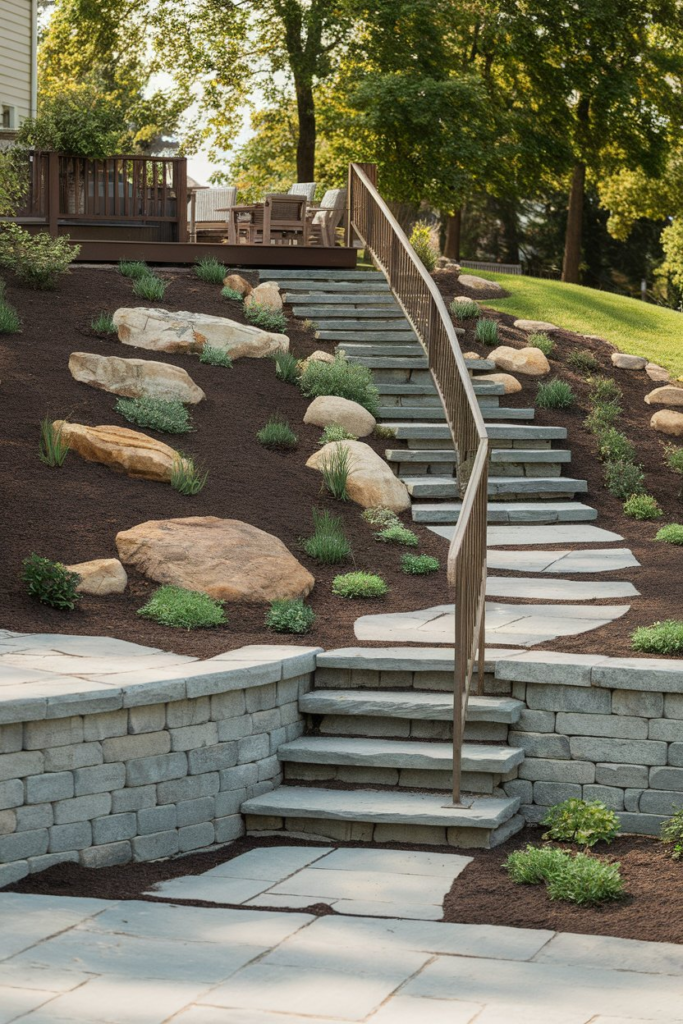
You might think a lawn on a slope is impractical, but with the right design, it can be the perfect spot to relax and enjoy the view. If your slope is gentle, try planting fescue or bluegrass—they grow well on hills and give a lush, green look.
Incorporating a few mowing strips or pathways through the lawn makes it more accessible and creates visual interest. I once had a small lawn on a moderate slope, and lounging on a hammock under a shady tree at the top of the hill was the perfect spot for an afternoon nap.
4. Install a Water Feature for Sound and Movement
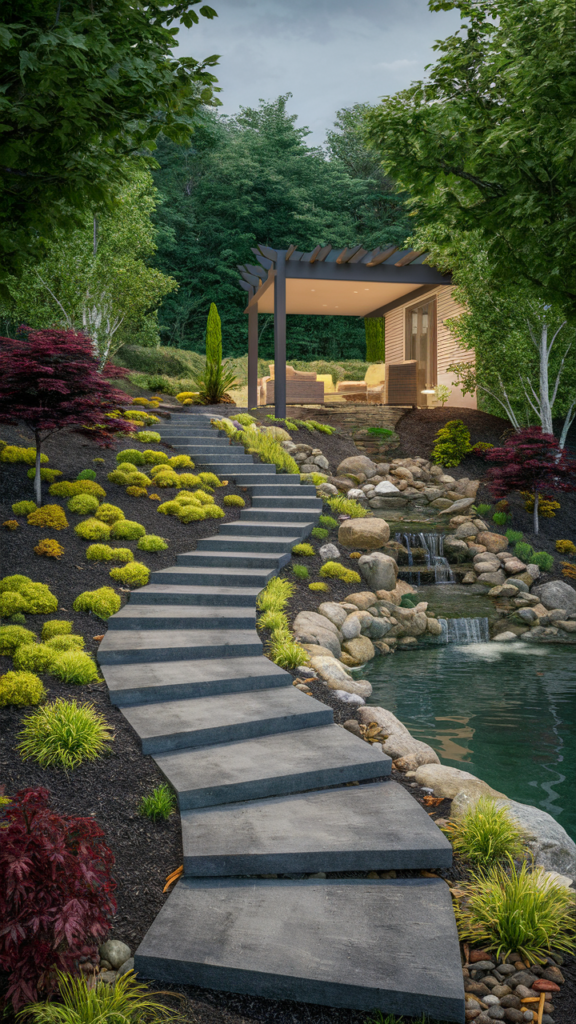
A sloped backyard is an ideal canvas for creating a natural-looking water feature. Think of a rock waterfall or a stream that flows down the slope, adding a soothing, natural sound to your outdoor space.
The trick is to use river rocks and large boulders to create a layered effect, allowing the water to trickle down naturally. A small pond at the base can create a serene focal point, with the sound of running water adding an extra layer of peace to your space. Water features can transform a regular backyard into a tranquil retreat.
5. Build a Raised Deck with a View
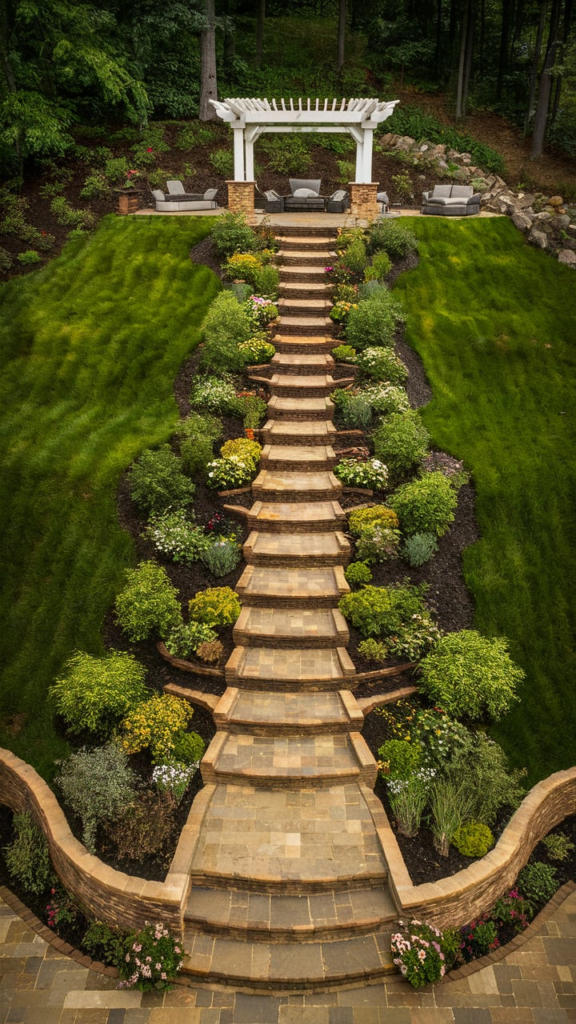
One of the best ways to handle a sloped backyard is to build a raised deck or patio that overlooks the slope. A deck allows you to level the playing field and provides a perfect spot for dining, lounging, or hosting friends.
Use natural wood or composite decking to blend with the landscape, and consider adding a glass railing to preserve the view. I once built a deck on a slope, and the elevated perspective changed the way I experienced my entire backyard—it felt like a whole new world.
6. Incorporate Steps and Pathways for Accessibility
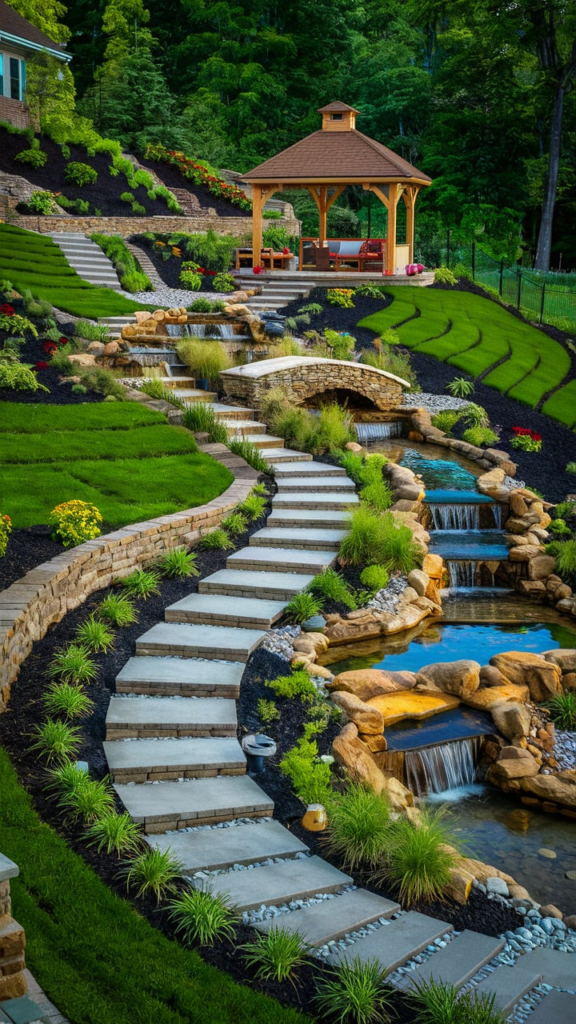
Slopes can be tricky to navigate, but steps and pathways provide both function and style. Use flagstone, bricks, or gravel to create a meandering path that winds through the landscape. For a more formal look, install stone steps or use timber planks to create a rustic vibe. These pathways not only make it easier to move around your backyard, but they also break up the slope, adding visual interest and charm.
7. Create a Rock Garden for Texture and Low Maintenance
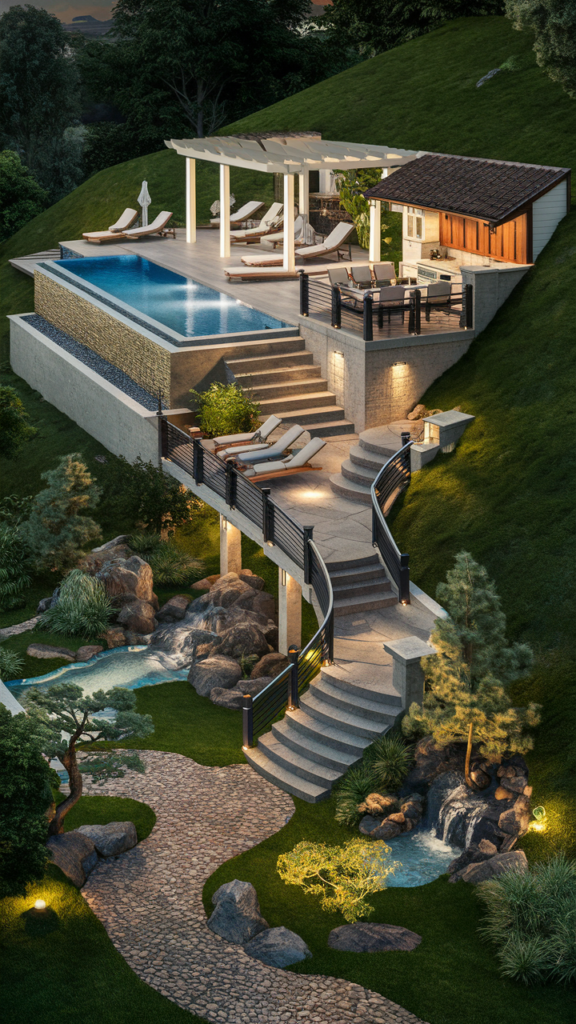
Rock gardens are perfect for sloped backyards because they require very little maintenance while adding texture and visual appeal. Choose succulents, cacti, and low-growing perennials to plant in between rocks.
Creeping thyme or lavender are excellent options for adding fragrance, while sedum and alpine plants can thrive in drier, rocky conditions. The rocks act as natural mulch, helping to retain moisture in the soil while keeping weeds at bay.
8. Design a Formal or Informal Garden Path
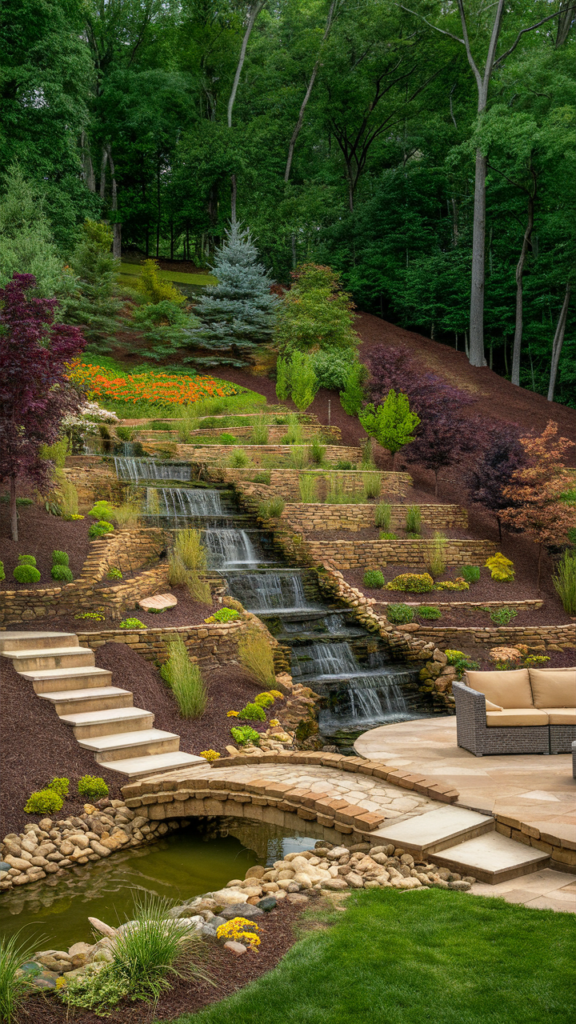
Paths are essential in sloped yards. Whether you go for a formal straight path or a more informal meandering design, a garden path adds functionality and elegance. For a naturalistic feel, consider stepping stones set into the ground, surrounded by lush greenery or small shrubs.
For a more manicured look, lay down brick or stone tiles in a straight line or gentle curve to lead the eye down the slope. These paths provide a way to move through your yard while adding a sense of flow and direction to the space.
9. Plant in Layers for Visual Interest
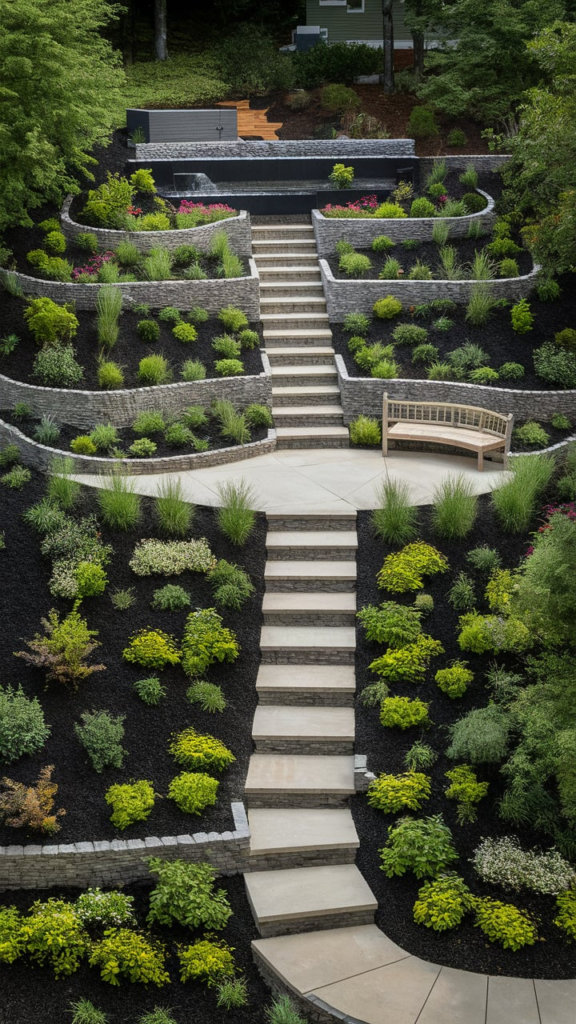
Layering plants according to height and texture is one of the most effective ways to add depth and dimension to a sloped yard.
Start with tall shrubs or trees at the top of the slope, followed by medium-height plants in the middle, and finish with ground covers or flowers at the bottom. This tiered effect creates a lush, dynamic garden that flows beautifully down the slope, and it prevents erosion by keeping the soil in place.
10. Use Ground Covers to Prevent Erosion
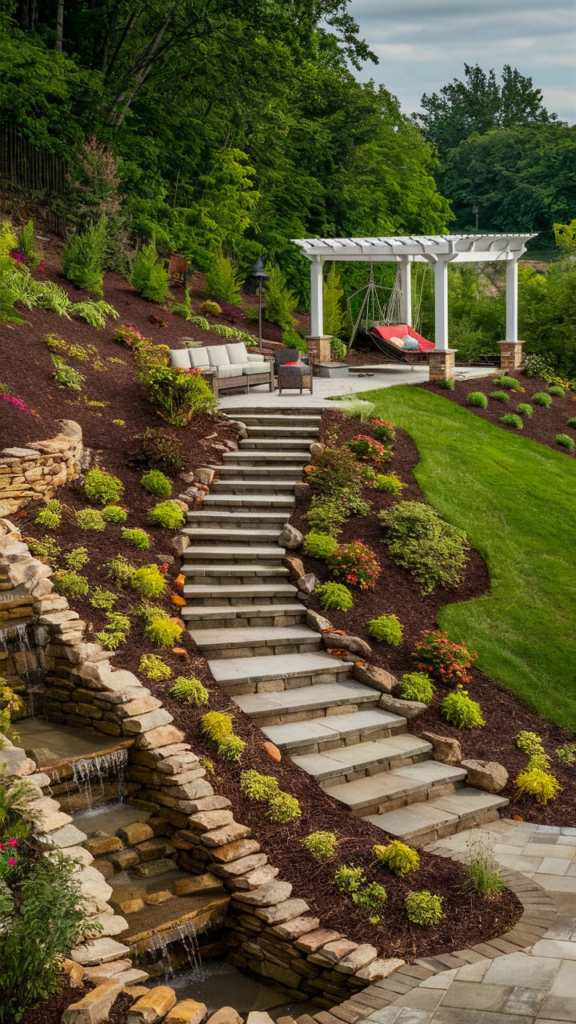
Ground covers are your best friends when it comes to controlling soil erosion on slopes. Planting creeping juniper, vinca, or hostas will help stabilize the soil, while also adding lush greenery and texture to the garden.
These plants spread quickly and form dense mats, which keep the soil intact and reduce water runoff. Ground covers are an eco-friendly solution to a common landscaping problem and they enhance the overall look of the backyard.
11. Integrate a Fire Pit for Evening Gatherings
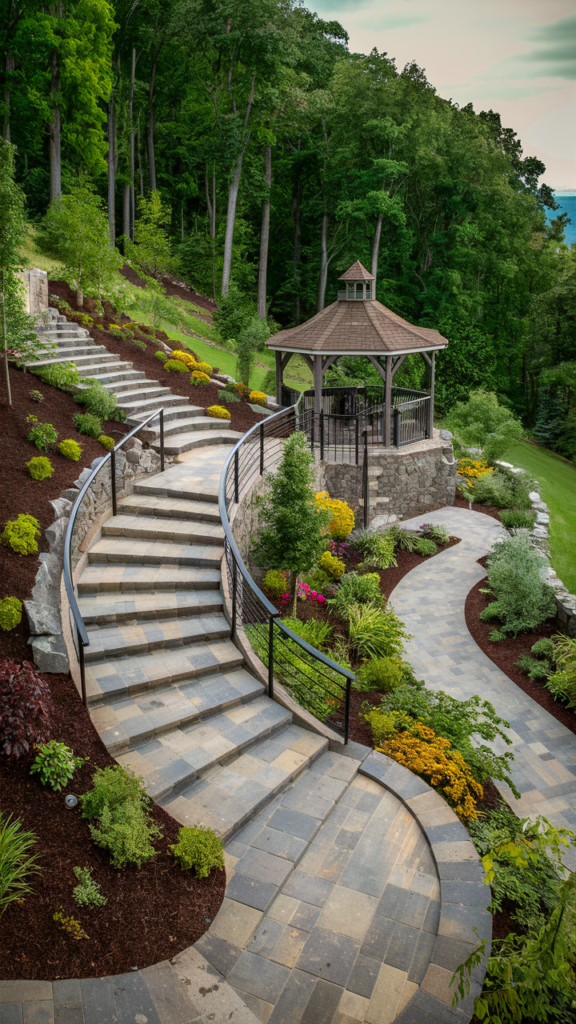
A sloped backyard is the perfect location for a cozy fire pit. You can create a flat seating area around the fire pit, with stone or concrete seating to anchor the space.
Having a fire pit on a slope can give the space an elevated, panoramic feel, where you can enjoy the warmth and beauty of the fire while taking in the landscape. The natural slope creates a built-in backdrop for the fire, enhancing the ambiance.
12. Use Raised Planters for Gardening on the Slope

Raised planters are a great way to tackle a sloped garden while providing practical solutions for growing plants. These planters help manage drainage and soil stability, and they create neat, tidy spaces for planting vegetables, herbs, or flowers.
You can arrange them along the slope or build them into retaining walls to add structure and style. Raised beds are also great for those who prefer container gardening over traditional in-ground planting.
13. Create a Sloped Herb Garden
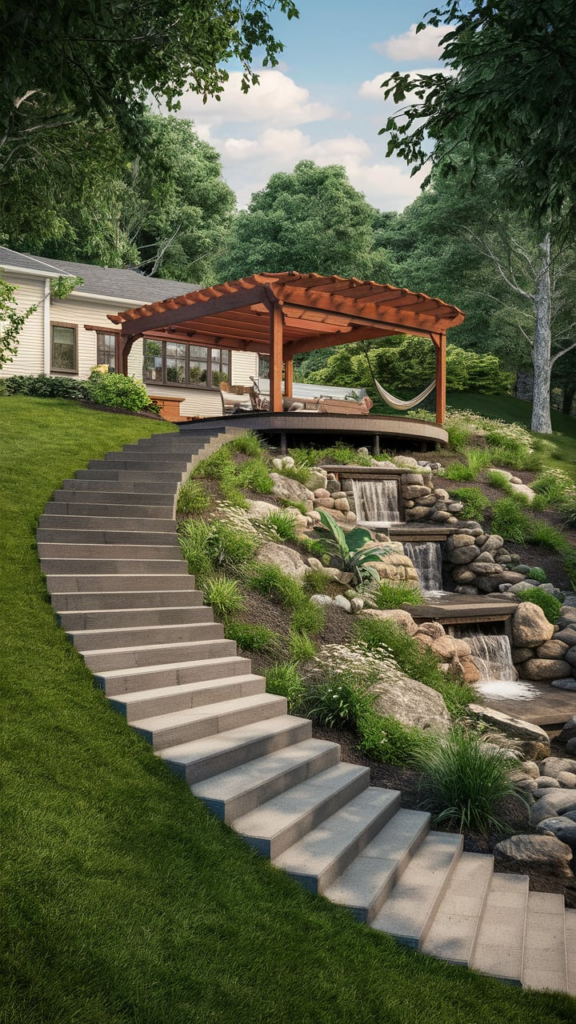
Herb gardens thrive on slopes because they love good drainage. Choose rosemary, thyme, and sage, which can grow beautifully in sloped beds, creating an aromatic oasis. Herbs also don’t need much water, making them a great low-maintenance option.
Design your sloped garden with a few raised beds or even integrate the herbs into your terraced landscaping. The idea of harvesting fresh basil or mint from a garden that rises up in front of you feels like an instant reward.
14. Add an Outdoor Kitchen for Convenience and Style

If you’re someone who loves to entertain, an outdoor kitchen on a sloped backyard is an excellent addition. You can use the slope to your advantage by placing your kitchen on the lower end of the yard, creating a natural flow that leads to your dining and seating areas.
Building a kitchen into the slope can be an excellent way to blend functionality with aesthetic beauty, creating a cooking space that feels integrated into the landscape. Imagine cooking while overlooking your beautiful yard—it feels like a luxury experience.
15. Plant a Vertical Garden for Small Spaces
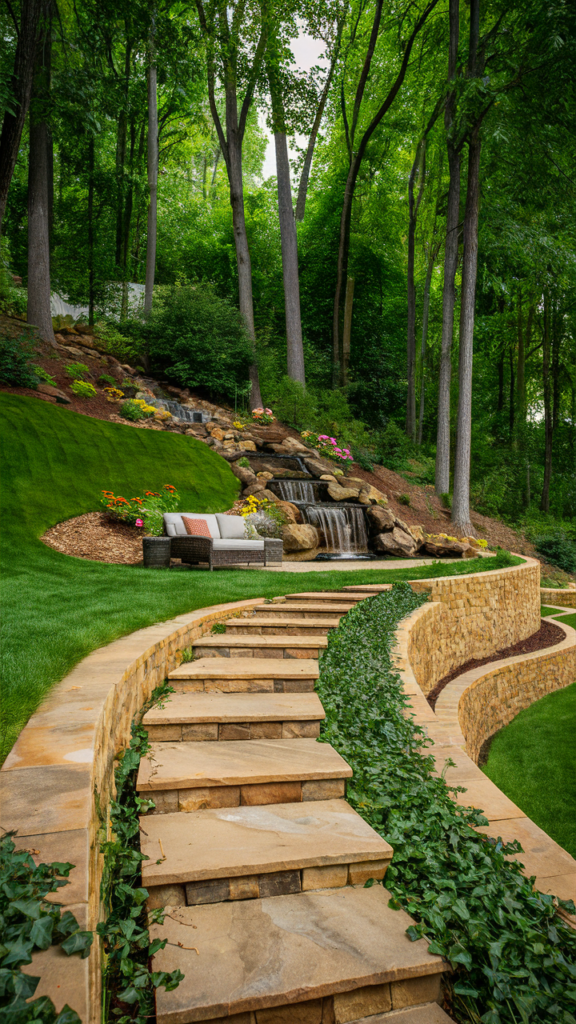
If your backyard is small and sloped, consider a vertical garden to make the most of the available space. Use trellises, plant towers, or vertical planters to grow climbing plants like grapes, tomatoes, or ivy. This maximizes your vertical space and allows you to grow plants on the slope without taking up valuable ground area. Vertical gardens are a great way to add greenery while keeping the space functional.
16. Include Seating Areas with Great Views
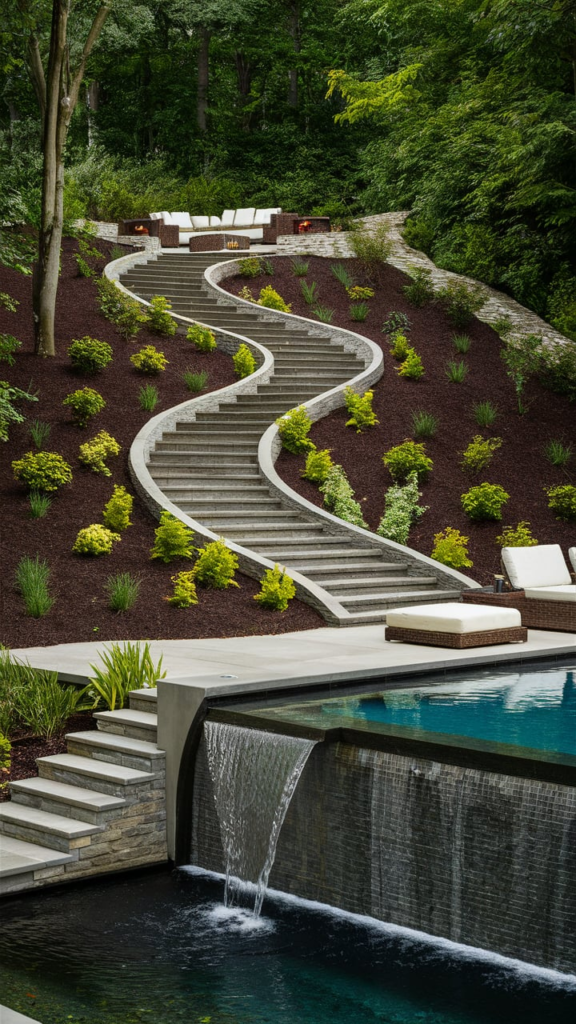
Designate areas in your sloped backyard for sitting and enjoying the view. Whether it’s a bench, a swing, or even an oversized bean bag, having spots where you can sit and take in your landscape can transform the backyard into a peaceful retreat. Position seating near natural features like a water element or a beautiful view of the garden. It’s like carving out little spots for meditation, relaxation, and appreciation.
17. Try a Zen Garden for Tranquility

A Zen garden on a slope is the ultimate in minimalist beauty. Use carefully placed stones, sand, and raked patterns to create a calming, meditative space. Add bamboo, palm trees, or succulents for a touch of greenery. Zen gardens are designed to evoke calm and contemplation, making them perfect for a sloped backyard that needs a serene focal point.
18. Add a Pergola to the Sloped Yard

A pergola is an excellent structure to include in a sloped backyard. It provides shade, creates a beautiful focal point, and elevates the design of the yard. Build the pergola on the flat section of your yard or attach it to a retaining wall. Climbing plants like roses or wisteria will drape over the pergola, adding lush greenery. Sitting under a pergola with a gentle breeze rustling through is one of the most relaxing ways to enjoy a sloped space.
19. Install a Spiral Staircase for Multi-Level Access
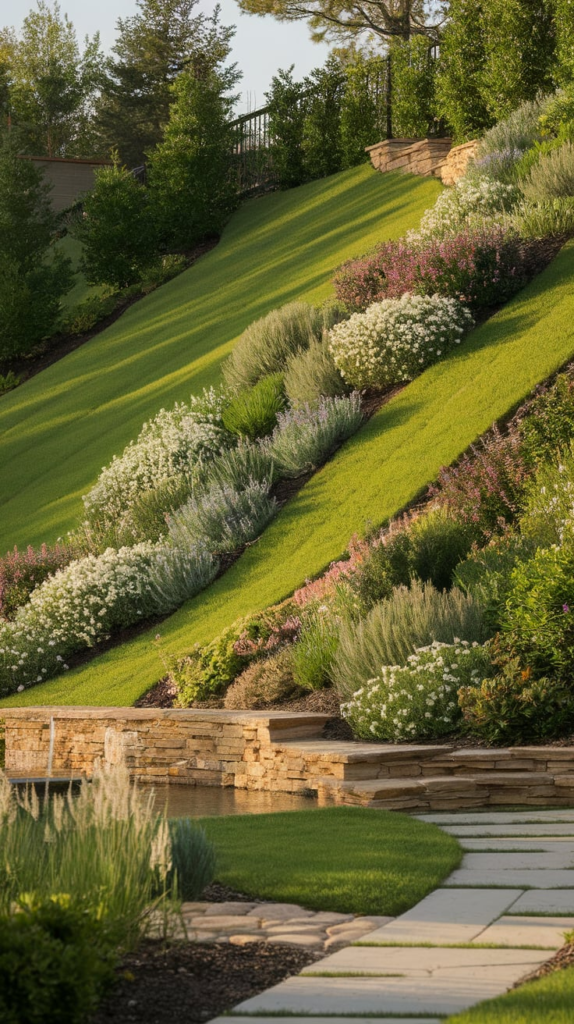
For steep slopes, a spiral staircase can be both functional and visually stunning. It allows easy access between levels while adding a sculptural element to the backyard. Whether you use it to access a raised patio, a garden terrace, or an elevated seating area, a spiral staircase will enhance your space with a touch of drama and elegance.
20. Create a Rustic Garden with Wood Features

Wooden features like benches, fences, and raised garden beds can soften the edges of a sloped backyard, bringing a rustic charm to the space. Pair wood with natural stones, and you’ll create a cohesive look that feels warm, welcoming, and earthy. My own backyard has a few wooden pathways that meander through the garden, and they provide a natural feel that ties everything together seamlessly.
Conclusion
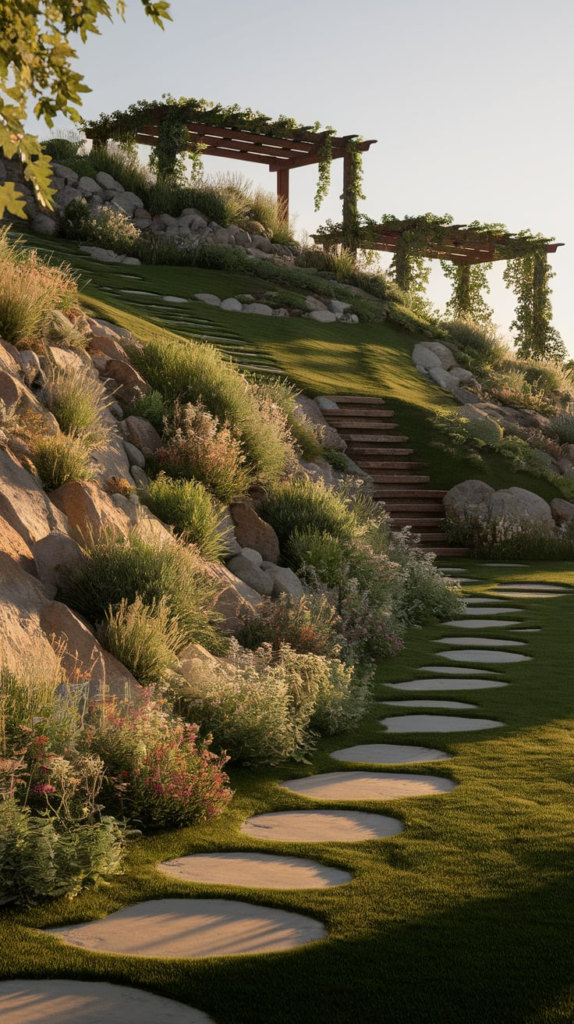
A sloped backyard might seem like a challenge, but with the right landscaping techniques, it can be the perfect opportunity to create a dynamic and visually interesting space. From terraced gardens to water features, seating areas, and vertical gardening, these 20 ideas will help you make the most of your backyard’s unique terrain. Every sloped yard tells a story—it’s u

